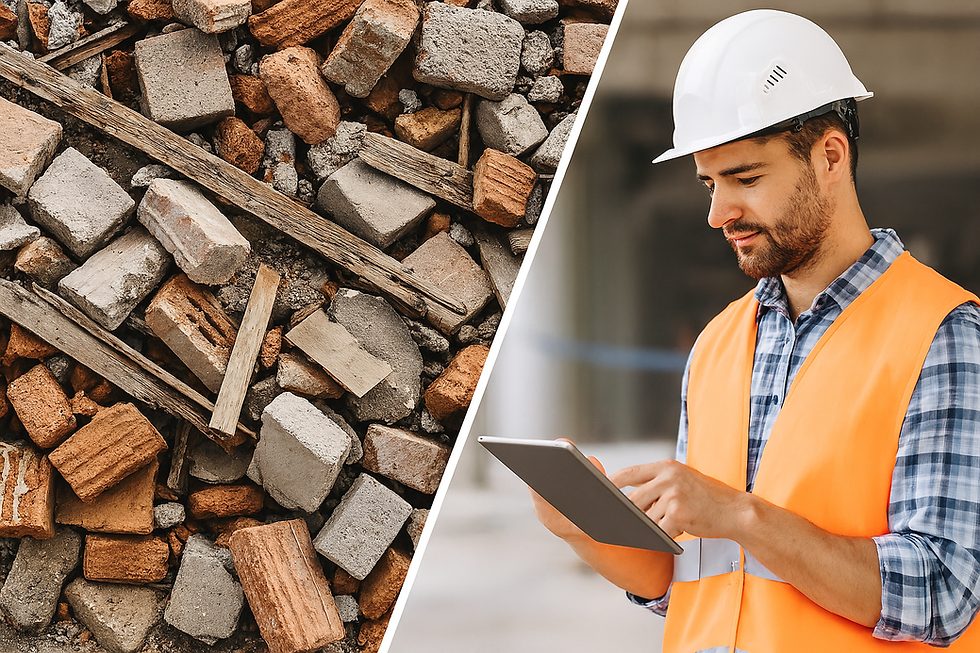Material Takeoff
- Jimish Sura
- Jan 25, 2022
- 3 min read

Oct 25, 2021 | Kinjal Shah
Quantity takeoffs are an essential aspect of the construction estimating process and can also be referred to as a quantity takeoff in construction. Both major and minor projects use quantity takeoffs to determine actual costs.
To produce a quantity takeoff, the engineer needs to work on Structural drawings. The estimator has to prepare a list of each material required to complete a construction
Preparing a quantity takeoff required a high degree of skill, good judgment, and thinking skills. These skills are necessary, but recently the barrier to producing an accurate quantity takeoff has been reduced in some ways through the use of construction estimation software with an integrated ability to create digital takeoffs.
Costs included in preparing Takeoff:
The information from a quantity takeoff is taken into a final detailed estimate, along with:
Labor costs
Material costs
Overhead costs
Subcontractor costs Equipment rentals.
Components of Quantity takeoff
Quantity takeoffs offer a list of all of the materials and prices required for a construction project. The term “takeoff” refers to this process of “taking off” all materials for a project from a blueprint or design drawing.
The beginning stages of a quantity takeoff involve putting together a list of all materials required for a project, which include raw materials like concrete, bricks, and steel.
As part of this process, the estimator and contractor need to note specifics about each material.
For materials like concrete, the quantity takeoff would include things like:
Specific grade of concrete required
Transportation
Cube testing reports
Another material, a quantity takeoff incorporated is all of the steel piping required for a project. This includes details about the length and width of pipes and ensures that they will meet design specifications.
Importance of Quantity takeoff
Effective Cost Tracking: quantity takeoffs help team members anticipate the labor, materials, equipment, and subcontractor costs for all building elements.
Efficient Time Management: Takeoff helps teams perform the activity of an entire building in just minutes, whereas traditional methods could take days.
Clear Communication: accurate quantity takeoffs mean the entire team can gain access to a dynamic, visual representation of a project’s estimated costs
Quantity takeoffs are time-consuming, but whether a project is big or small, it’s worth getting right the first time around.
Types of Quantity takeoff
Despite the unique nature of each quantity takeoff, there are two major types of quantity takeoffs.
Manual Quantity Takeoff: This is the oldest and simplest form of material takeoff. It involves the estimator taking physical plans or blueprints and carefully detailing every material type and quantity specified on the construction drawings.
It is a time-consuming data management process and has more chances for human error. It depends on the estimator's knowledge of materials, experience in estimating, and skill in taking off material quantities that ensures accuracy.
Digital Quantity Takeoff: Performing material takeoffs through computer analysis and database application is comparatively new in the construction industry.
Digital takeoffs are helpful for large and complex projects because of their speed and accuracy.
Conclusion:
Quantity takeoffs can be a complex process. However, they have a specific purpose, that’s accurate progress billing, labor reconciliation, and procurement planning. Whether manual takeoff or equip them with the latest digital takeoff program, the result must be an accurate list of all materials required to complete the project. It must also include a reasonable price structure.
To save time, money and make quantity Surveying more accurate and easier, anyone who frequently makes material takeoffs have many fantastic software solutions designed for these purposes. One of which more preferable is https://sq-feet.com/



Comments